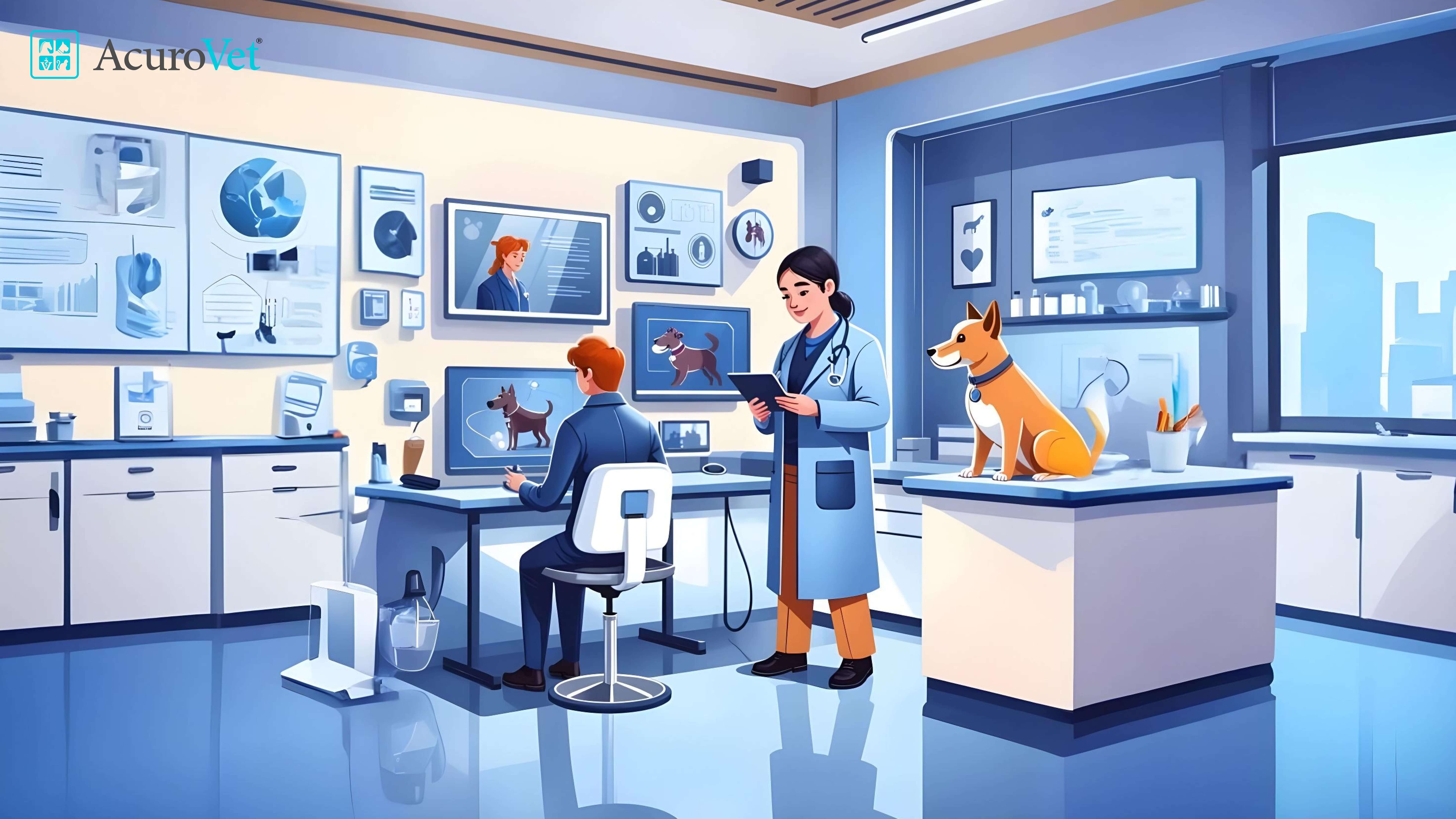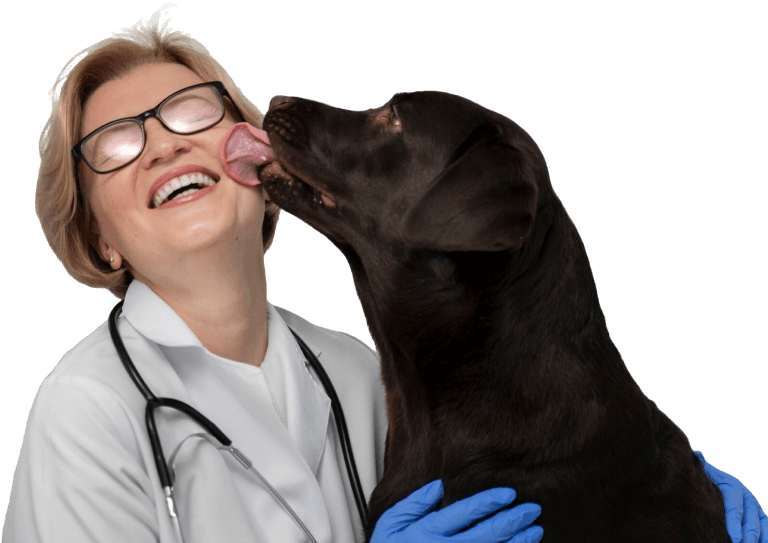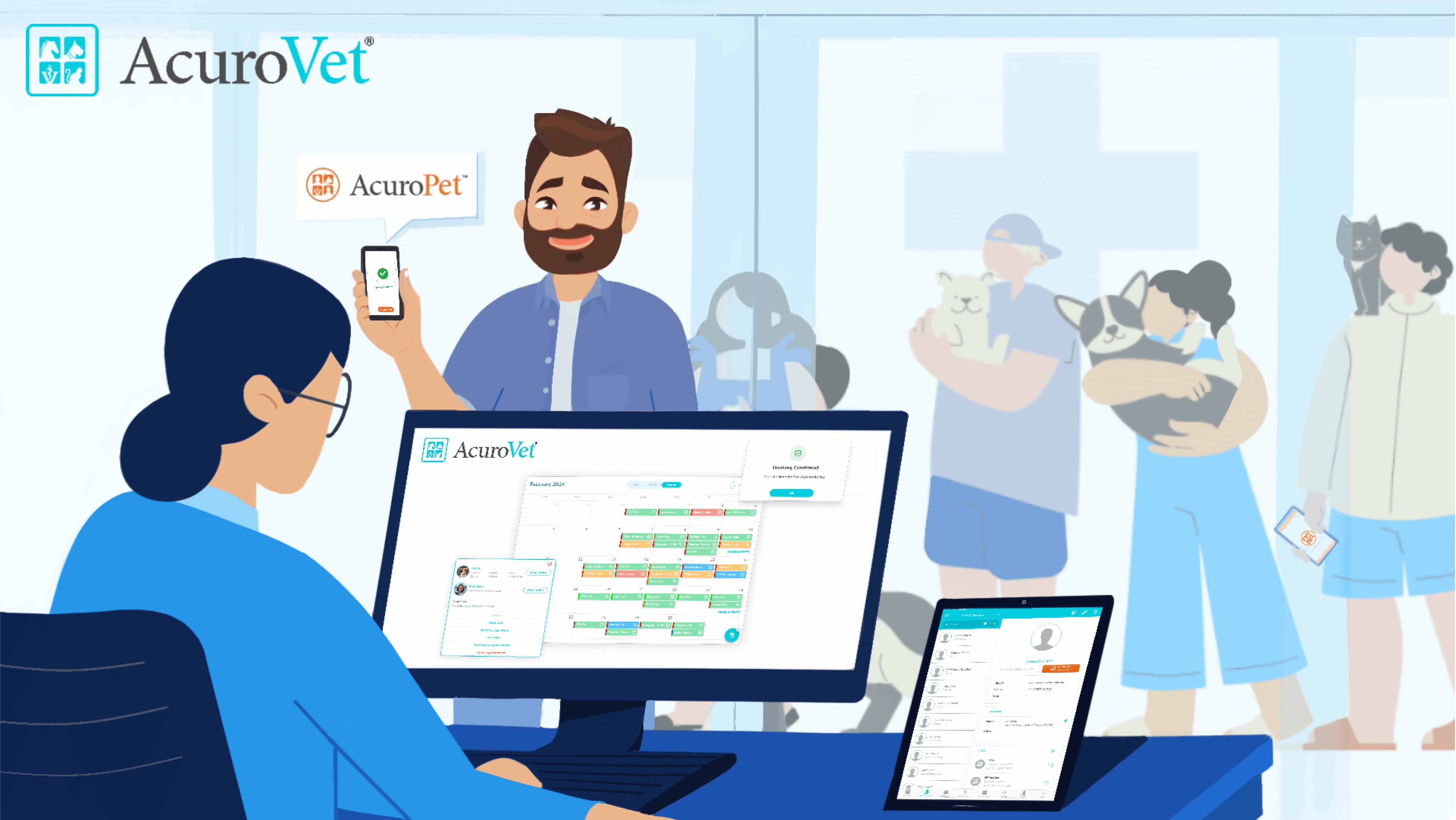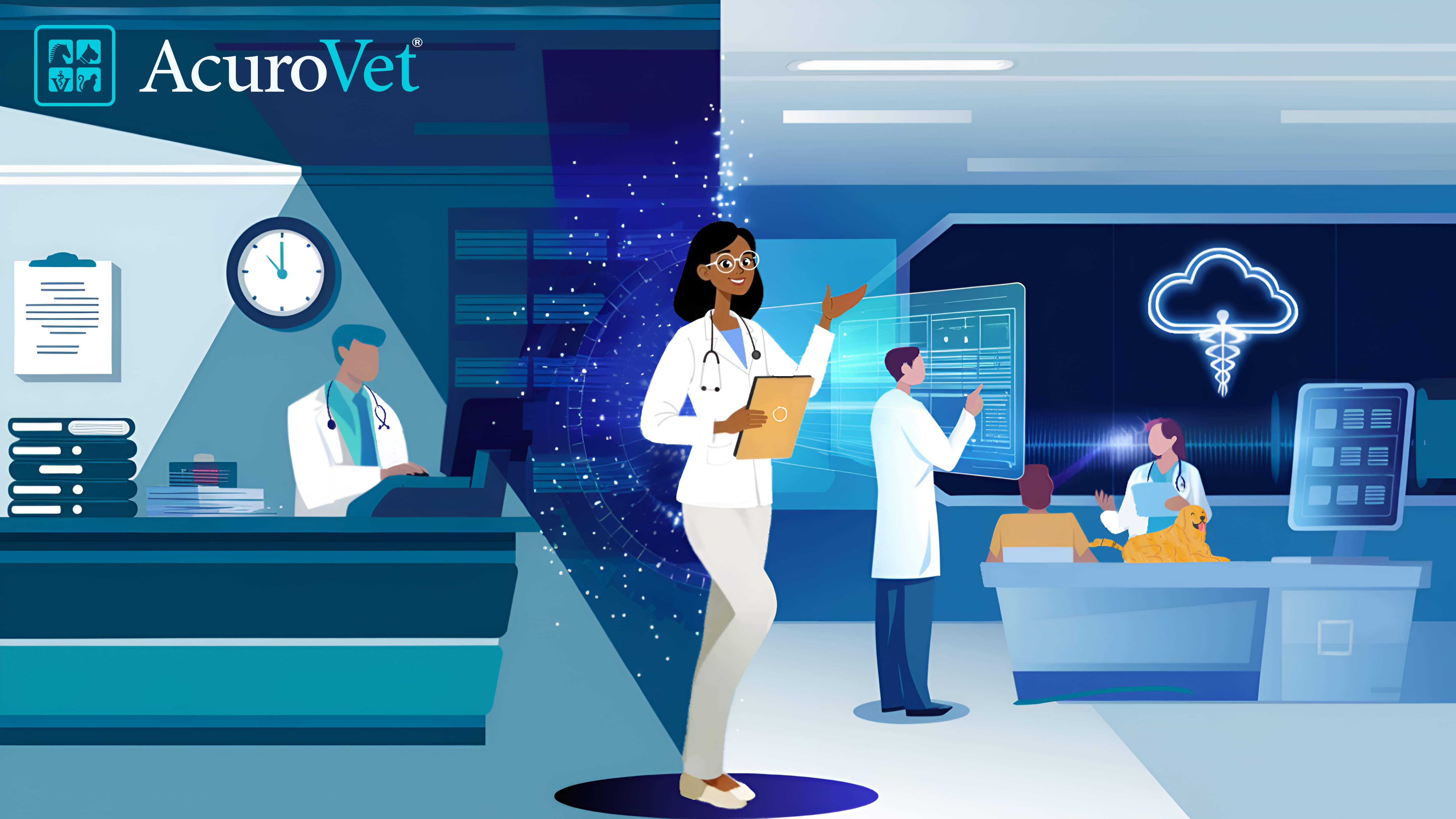
Leveraging Veterinary Technology to Deliver Personalized Pet Care
Discover how veterinary technology is revolutionizing pet care with personalized treatments, advanced diagnostics, telemedicine, wearable health trackers, and AI-driven insights-enhancing pet well-being and making veterinary practices more efficient

Introduction
For most people, their pets aren’t just animals-they’re family. Increasing pet ownership is proof that people are willing to spend more for their furry, finned, and feathered family. For veterinarians and pet parents, technology has helped monitor their pets’ health and well-being. A report states that pet care apps are valued at $2015.2 million, with a compound annual growth of 18% until 2031. North America holds the maximum market share–generating 40% of the total revenue. Technology has benefited human healthcare exponentially, and it only makes sense for it to extend into veterinary care for better treatments, diagnostics, and overall well-being.
Traditional treatments are still in use, but they can lack the personalized approach that comes with tech-driven pet care. One-size-fits-all solutions don’t work anymore for pets with different genetics and mannerisms. With veterinary technology, vets can offer more proactive and efficient care to their patients, and give them a healthier and fulfilling life.
5 Technologies Enhancing Personalized Pet Care
The surge of technology adoption has ushered in a new era of pet care where the priority is the happiness, health, and safety of the pets. There is a fine line between innovation and ethical considerations, which the following technologies are successfully balancing to reshape the future of veterinary medicine:
-
Veterinary Practice Management Software
Veterinarians need to stay on top of things to provide the best healthcare services. For this, you need to start integrating your current operating systems with good veterinary practice management software. AcuroVet is the only platform that comes with image-based forms that help you chart injuries, dental abnormalities, tumors, etc., and provides personalized features assisting holistic care veterinarians. From scheduling appointments to personalizing treatments, from maintaining patient records to sending medicine refill reminders, this tool makes veterinary operations seamless.
Whether you practice at a veterinary clinic or a hospital, veterinary software will help you minimize errors at work and eliminate additional and repetitive work. Its features, like the following, will simplify processes and boost productivity:
- Improves communication with clients by sending reminders, pending invoices, etc.
- Strengthens client relationships by maintaining a common mode of contact and asking for feedback after consultations and treatments.
- Systematically stores data and reports of each patient.
- Maintains the health and financial standards required from veterinary practitioners.
- Provides quality services by eliminating paperwork and building a sustainable veterinary practice.
-
Telemedicine and Remote Consultations
All veterinarians struggle with checking up with their patients, especially those living in faraway places. With telemedicine, you can contact pet parents who live remotely. This technology also considers disabled/senior pets who cannot go to the vet often by providing fast consultations with ease.
Telehealth, with apps like AcuroVet, makes it easy to schedule follow-up appointments and automate reminders for clinic/hospital visits. You can also regularly check in online with clients about pets with chronic conditions. The convenience and affordability of this tech solution paves the way for more in-depth research and discussions on pet nutrition, health, and proper care, and eventually builds a stronger relationship between the vet and client.
-
Data Analytics and Personalized Treatment Plans
Data analytics has helped veterinarians focus more on personalized pet care because the data collected over months and years helps them to:
- Conduct regular genetic testing to predict worrisome health markers in pets and suggest appropriate medicines
- Create customized treatment plans based on the lifestyle, gender, breed, genetics, and other vital data
- Make recommendations regarding nutritional and behavioral aspects that go into good veterinary care.
Data analytics collects data from the beginning and makes separate profiles for each pet. Large datasets regarding health, exercise routine, feeding/sleeping patterns, wearable trackers, etc., are found in one place, eliminating the hassle of maintaining records. These data-driven insights help veterinarians make informed and timely choices.
-
3D Printing and Robotics
3D printing and robotics have made it possible for vets to give disabled and physically challenged pets a chance to live a better quality of life. You can make customized prosthetics and orthopedic implants matching the animal’s anatomy at a more affordable rate and quicker pace. You can also use 3D printing tech to create dental implants, ensuring proper oral health for pets with dental complications.
Vets are also conducting robotic-assisted surgeries to reduce the trauma around the affected area and minimize blood loss, leading to a quicker recovery time and shortened hospital stays. Robotic arms, HD cameras, advanced software, etc., ensure precise and minimally invasive surgeries. For clients with busy lifestyles, you can suggest smart home devices for pets like smart litter boxes, medicine dispensers, and automated pet feeders-making it easier for them to take proper care.
-
Wearable Devices and IoT
Wearable technology is a hot topic amongst veterinarians and pet owners today due to personal attachment and safety reasons. Superior functional trackers like smart pet collars and pet activity trackers monitor the health of pets in real time. IoT-enabled feeding systems and automated medication reminders ensure that parents take the best care of their pets.
Smart pet devices help check vital parameters like heart rate, respiratory rate, body temperature, sleep quality, etc., for early identification of health issues. For example, a sudden increase in heart rate or decrease in activity may indicate signs of stress or pain. Based on this data, veterinarians can promptly investigate deeper and alert pet parents. Both parties are equally responsible for the pets’ wellbeing and wearable tech makes it a tad bit easier to manage.

5 Benefits of Technology-Driven Personalized Pet Care
Veterinarians face the dilemma of urging clients to undergo necessary screenings for their pets without coming across as someone who upsells high-tech services. Pet parents find themselves in a fix of the extent of technology they’d integrate into their pet’s life, where they’re monitored 24/7. However, vets can reap multiple benefits with technology-powered personalized pet care.
-
Improved accuracy in diagnosis and treatments
Pet health technology has greatly improved with the regular collection of data through veterinarians and applications-simplifying diagnosis and detection of any underlying health issues. The pets’ medical history, genetics, behavioral patterns, etc., help in accurately diagnosing health issues and providing needed treatments. Vets and pet wellness practitioners can use technology to explore the success rate of other treatment options, like acupuncture and photobiomodulation, depending on the animal’s condition.
-
Enhanced pet health tracking and preventive care
From pre-appointment instructions to “vaccine dose due” or “appointment due” reminders, technology empowers vets and clients to proactively approach their pet’s health. Many applications, like AcuroVet, provide a variety of services to streamline veterinary diagnostic processes. For example, you can schedule and estimate costs for a yearly test reminder or customized medical tests as per the pet’s vitals.
-
Specialized behavior and training programs
Pet training is a rewarding process but demands time and effort from pet trainers. With technology, you can use available digital solutions to address behavioral issues and streamline training processes. For example, mobile applications come with instructional videos and interactive exercises that address training needs like obedience and agility. Similarly, wearables for pets address behavioral issues like leash-pulling and excessive jumping/barking. The gamification of training programs leads to well-behaved and happy pets.
-
Increased accessibility and affordability of veterinary services
Veterinary services have made significant progress in recent years. Your clients can get a specialist in no time and treatment recommendations based on the pet’s condition. Geographical barriers are nil with telemedicine and telehealth facilities. As a veterinarian, you can help your clients save travel time and ask them to instead place their inquiries on the veterinary software.
-
Reduced stress for vets and pet parents
Pet surveillance technology has greatly benefitted vets for pet health monitoring. Pet cameras and tracking devices of today are smartphone-friendly and are convenient options for vets and pet parents. Technology-driven pet care continues to foster connection, keeps vets and pet parents at peace, and prioritizes pet health 24/7.
Future Trends and Innovations in Veterinary Technology
Technology is advancing rapidly and augmenting veterinary care. Telemedicine is gaining traction, pet tech gadgets are a game-changer, and robots are handling surgeries. There’s also a growing interest in alternative and complementary therapies, among other futuristic trends. Henceforth, you will notice more tech-driven veterinary treatments and care in the following scenarios:
- Experts are researching the scope, affordability, and expansion of gene editing and regenerative medicine. Stem cell therapy, for example, is offering new treatment options for chronic conditions like arthritis.
- Veterinary industry leaders are looking to expand pet insurance services that are highly personalized and based on data analytics.
- The focus will always be on customizing and personalizing treatments because no two pets have the same genetic makeup. Innovations in genetics and precision medicines will continue disrupting our understanding of pet health and veterinary care.
The Path Forward in Veterinary Care: Innovative, Personalized, and Empathetic
Undoubtedly, technology will continue making progress in veterinary practices by balancing the expertise that comes from traditional veterinary practitioners. However, it’s important to note that AI will complement and not overpower human expertise and responsible adoption of technology must be the center of veterinary care. Technology will always focus on personalized and quality care because of the sacredness of the human-animal bond. As the trajectory turns to tech-powered solutions in veterinary care, software such as AcuroVet provides pioneering services such as streamlined workflows, optimized data, etc. Take that leap of faith and start using cloud PMS more to provide better and more personalized pet care.
Q.1 How can veterinary practice management software improve pet care?
Veterinary practice management software like AcuroVet streamlines appointments, patient records, invoicing, and client communication, ensuring efficient, accurate, and personalized pet care.
Q.2 How does AcuroVet support personalized pet care?
AcuroVet offers image-based forms for injury detection, customized treatment plans, automated reminders, and seamless telemedicine consultations, making pet healthcare more precise and efficient.
Q.3 Can veterinary technology reduce administrative workload?
Yes, veterinary software automates scheduling, reminders, invoicing, and patient records, reducing paperwork and freeing up time for veterinarians to focus on patient care.
Q.4 How is veterinary technology transforming pet healthcare?
Innovations like AI diagnostics, wearable health trackers, telemedicine, and practice management software are enhancing preventive care, early disease detection, and treatment precision.
Q.5 What role does data analytics play in modern veterinary care?
Data analytics helps track pet health trends, identify risks early, personalize treatment plans, and optimize clinic operations for better patient outcomes.
Q.6 How can telemedicine benefit veterinary practices and pet owners?
Telemedicine enables remote consultations, follow-ups, and chronic disease management, improving accessibility to veterinary care, especially for pets in rural areas or with mobility issues.
Q.7 How do wearable devices enhance pet healthcare?
Wearable pet health trackers monitor vitals like heart rate, activity levels, and temperature in real time, allowing vets to detect health issues early and provide timely interventions.
Q.8 What are the benefits of AI in veterinary practice?
AI-powered tools assist in diagnosing conditions, predicting disease risks, and automating administrative tasks, helping vets provide faster and more accurate treatments.
Q.9 How can veterinary clinics implement personalized pet care?
Clinics can use veterinary software to track patient history, recommend breed-specific treatments, and set automated reminders for check-ups and vaccinations.
Q.10 What are the latest trends in veterinary technology for 2025?
Emerging trends include robotic-assisted surgeries, precision medicine, smart pet devices, and blockchain for secure medical records, enhancing pet healthcare quality and accessibility.

webinars, blogs, resources & more.
for 30 Days!

Recent blog posts

Feb 04, 2025
practice managementUnlock the Secret to Effortless Vet Appointment Scheduling in 2025!
Discover expert tips and modern tools to reduce no-shows, manage urgent cases, and optimize your veterinary appointment scheduling. See how AcuroVet simplifies scheduling with automation, client communication, and seamless integration.

Jan 24, 2025
practice managementThe Cloud Advantage: How Cloud Veterinary Software Can Transform Your Practice
Explore the benefits of cloud-based veterinary software over traditional server-based systems. Learn how Cloud PIMS work, what advantages do cloud veterinary software offer to vets and how they help modernize and scale veterinary practices, from traditional clinics to mobile veterinarians and integrative/holistic vets
